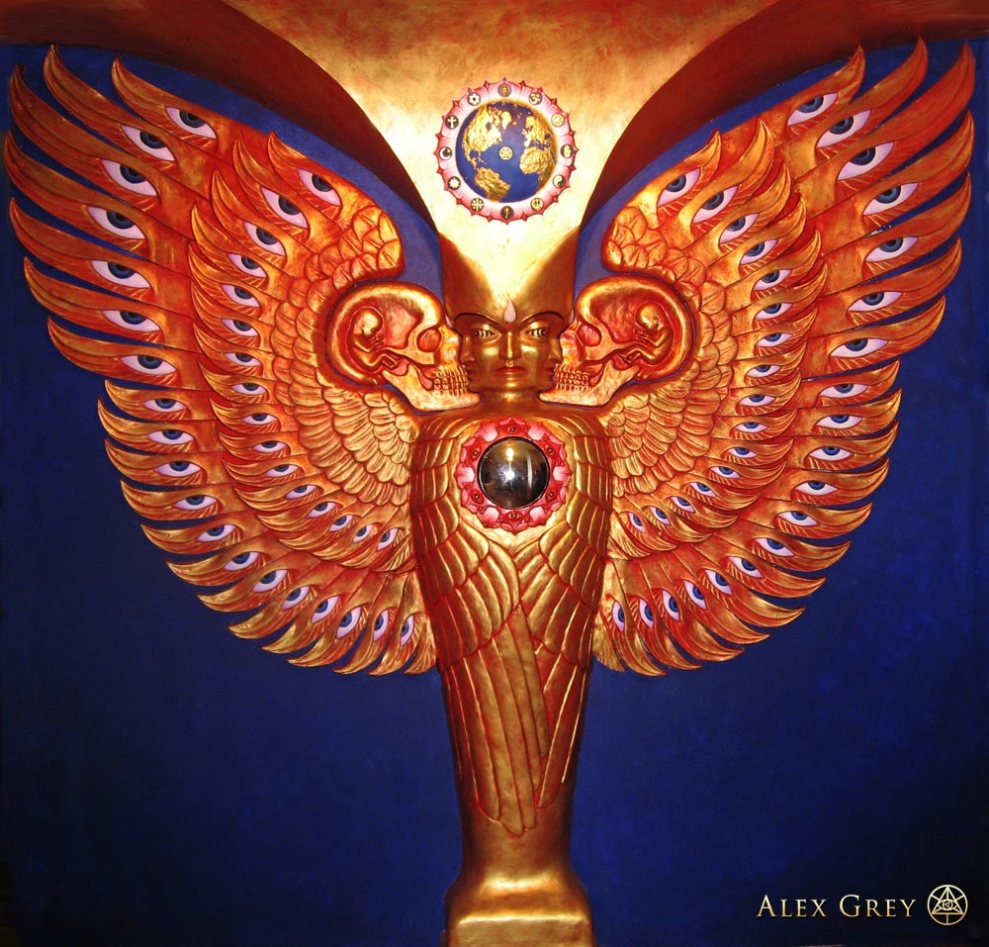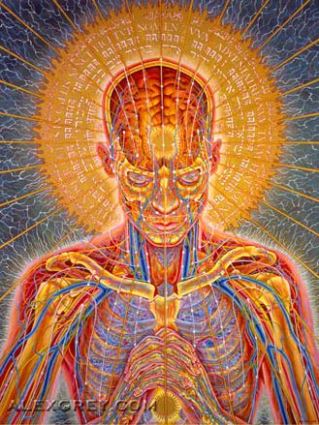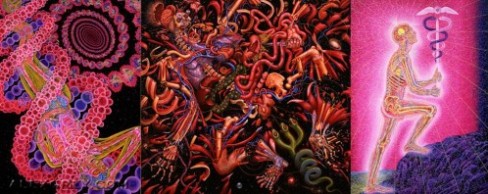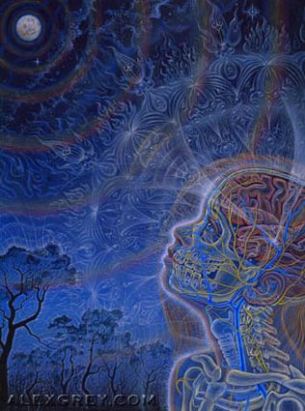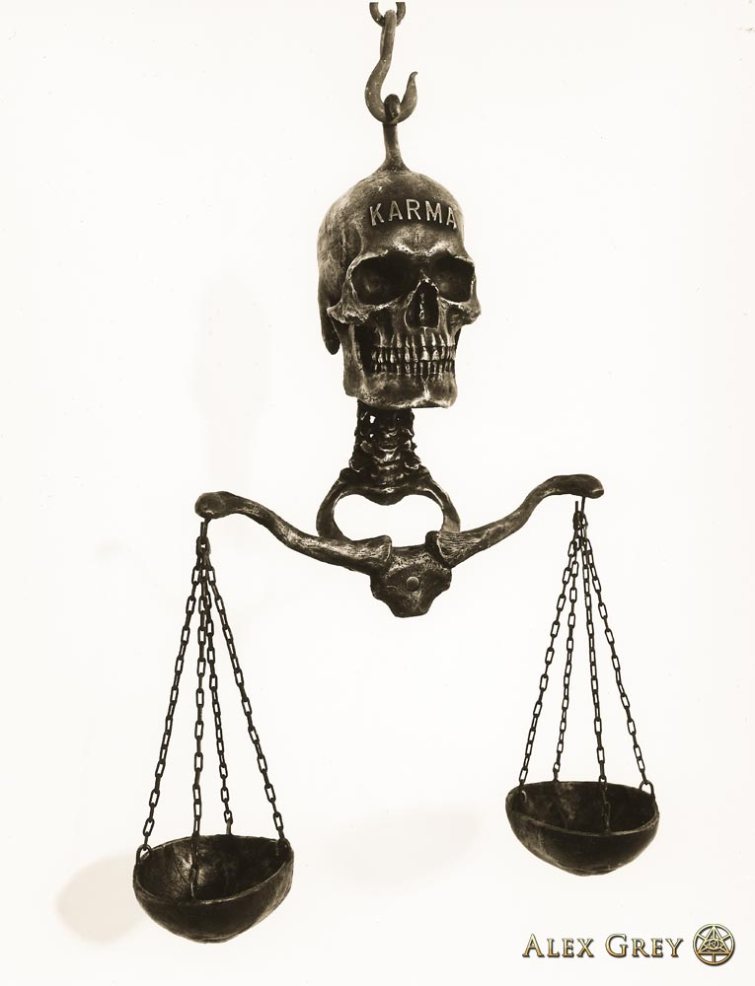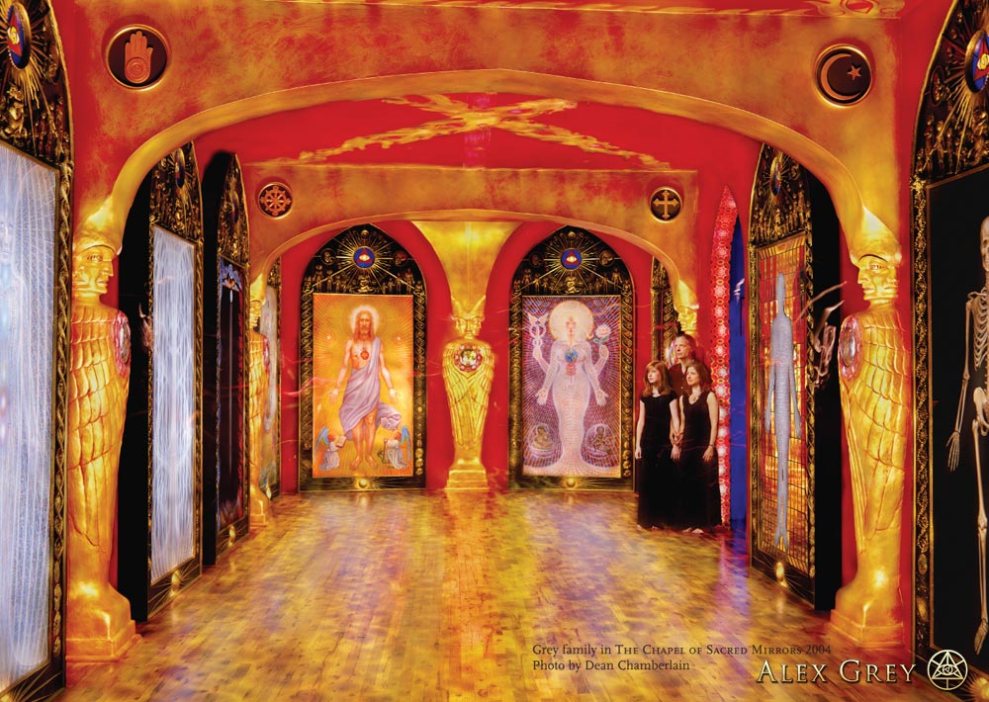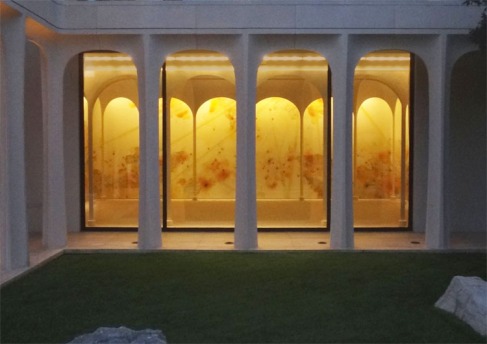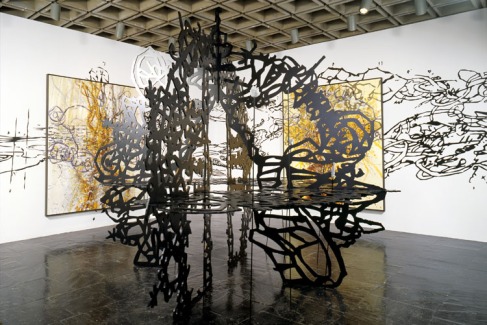Alex Grey was born in Columbus, Ohio on November 29, 1953. The themes of death and transcendence weave throughout his artworks, from the earliest drawings to later performances, paintings and sculpture. Alex went to the Columbus College of Art and Design on full scholarship from 1971-3. For five years, Alex worked in the Anatomy department at Harvard Medical School preparing cadavers for dissection while he studied the body on his own. He later worked for Dr. Herbert Benson and Dr. Joan Borysenko as a research technologist at Harvard’s department of Mind/Body Medicine, conducting scientific experiments to investigate subtle healing energies. Alex’s anatomical training prepared him for painting the Sacred Mirrors (see below) and for working as a medical illustrator. Doctors at Harvard saw images of his Sacred Mirrors, and hired Alex for illustration work.
In 1972 Grey began a series of art actions that bear resemblance to rites of passage, in that they present stages of a developing psyche. The approximately fifty performance rites, conducted over the last thirty years move through transformations from an egocentric to more sociocentric and increasingly worldcentric and theocentric identity. A five-year installation of Grey’s best loved artworks were exhibited at the Chapel of Sacred Mirrors, CoSM, in New York City from 2004-9. Alex and Allyson have collaborated on performance art, live-painting on stage throughout the world, and the “social sculpture” called CoSM, Chapel of Sacred Mirrors, that the Grey’s cofounded in 1996.
Grey’s unique series of 21 life-sized paintings, the Sacred Mirrors, take the viewer on a journey toward their own divine nature by examining, in detail, the body, mind, and spirit. The Sacred Mirrors, present the physical and subtle anatomy of an individual in the context of cosmic, biological and technological evolution. The series took ten years to complete, time in which the artist developed his depictions of the human body that “x-ray” the multiple layers of reality, and reveal the interplay of anatomical and spiritual forces.
Grey has also made his own contribution to the philosophy of art in his book The Mission of Art (1998). Therein, he promotes the possibility of the mystical potential of art: he argues that the process of artistic creation can (and should) play a role in the enlightenment of the artist. For him, the process of artistic creation holds the potential of transcending the limitations of the mind and more fully expressing the divine spirit. He also believes that art can induce within the viewer an elevated state wherein spiritual states of being are attained.
More Sources:
http://alexgrey.com/art/paintings/soul/
http://alexgrey.com/art/paintings/sacred-mirrors/
http://artboom.info/painting/alex-grey-the-art-of-a-visionary.html
http://fractalenlightenment.com/20/artwork/alex-grey-beyond-art
